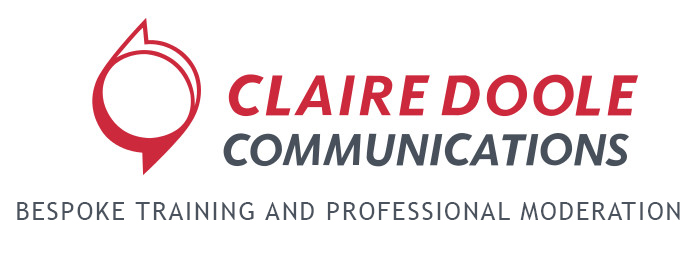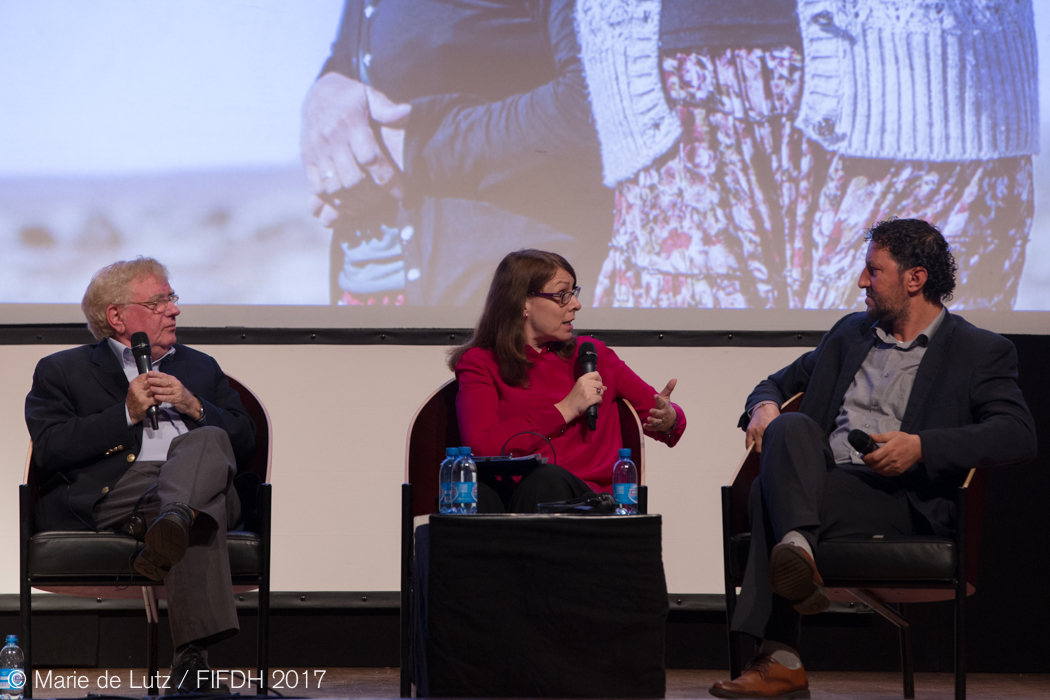
by Claire Doole | Mar 16, 2017 | Blog
There can’t be many subjects that provoke more heated debate than the Israeli/Palestinian conflict. So when the founder of the Geneva Human Rights Film Festival (http://www.fifdh.org/site/en/home) asked me to moderate a debate on the subject this week, I knew I had my work cut out.
As a former BBC journalist, I follow current affairs but I am not a subject expert. Yet at the Festival I would have a room full of subject experts. There are large Jewish and Arab communities in Geneva and many organisations that work towards ending the conflict.
Preparation was crucial if I was not to make a diplomatic faux pas and do justice to the speakers: Israeli professor and peace activist, Daniel Bar-Tal, founder of Stop Israel Save the Occupation (http://www.siso.org.il ) and Palestinian peace activist, Ali Abu Awwad, founder of the Tarir/Change Movement and Roots initiative (http://www.friendsofroots.net/the-people.html).
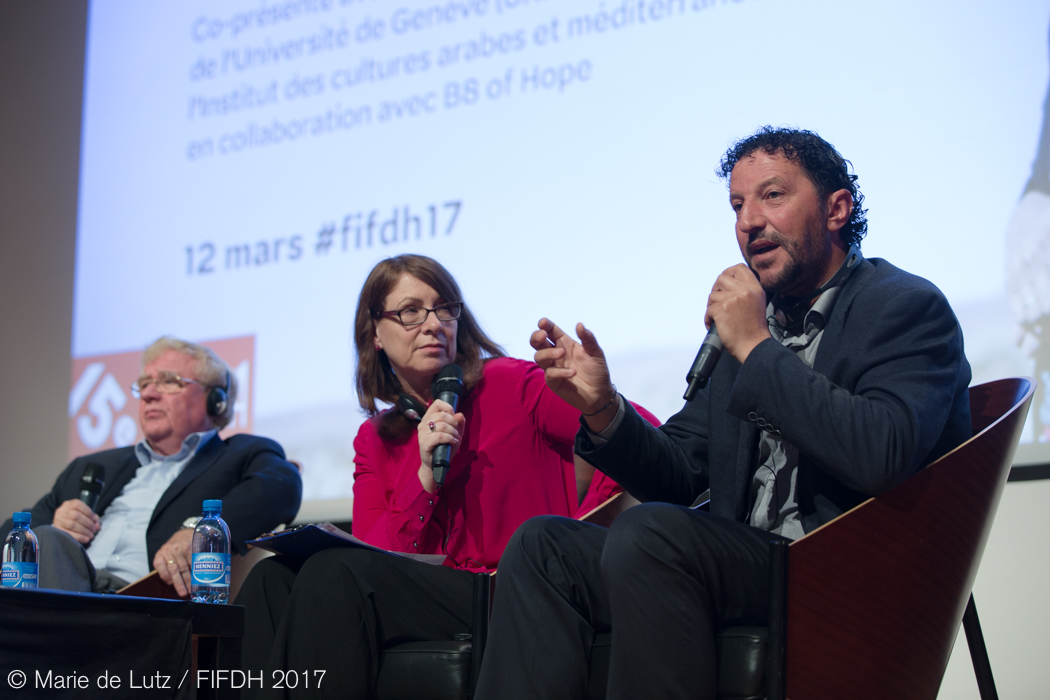
Daniel Bar-Tal, Claire Doole and Ali Abu Awwad at the Geneva Human Rights Film Festival.
So how do you prepare to moderate a panel on a hot topic? Below are some essential steps based on my experience last Sunday of moderating the discussion on Israelis and Palestinians against the Occupation.
- Research the subject. I read up on key moments in the conflict, checked when the last peace talks happened and the latest developments on what the new US administration was actually saying on the two-state solution, settlements and moving the US embassy from Tel Aviv to Jerusalem.
- Briefing with the panelists. It is key to build rapport with the panelists find out what they had done, their motivations and where they agree and disagree. I spent an hour with Daniel Bar-Tal on Skype and with Ali Abu Awwad in person.
- Structure, structure, structure. When you are faced with experts on a hot topic, the moderator has to have a clear idea of how to guide the discussion as otherwise it can easily get out of hand. Work out subject areas to cover during the panel. For example, objectives, motivations, internal challenges, external challenges, future vision, and reaction to recent events.
- Coherent flow. If there is a film or speaker before the discussion, it is important to refer back to this to ensure there is coherence but not duplicate the points. This means watching the film and knowing what the speaker will say so that you can move the discussion forward.
- Pre-panel meeting. Meet the organisers, technicians and panelists 1-hour before to check the choreography of the event – layout on stage, microphones, and timings. I also gave them an idea of my line of questioning. This is not a BBC interview but an opportunity for the panelists to get their points of view across.
- Check intro and bios. On a hot topic, every word counts. I made sure I asked the speakers to fact check my introduction and to agree to their bios.
- Dance in the moment. You have to be prepared to follow up on what people say, get clarity on certain points and get as many specifics as possible.
- It is about the panelists not the moderator. The audience, particularly if subject experts, has come to hear the panelists speak. It is not a BBC interview when the journalist often interrupts to press a point or get the news. However, the moderator does need to elicit interesting answers – not least because the organisers need quotes and sound-bites for their website and social media platforms. It is a balancing act.
- Questions not comments from the public. This applies to all panels, but particularly when the audience is full of subject experts. Even though I made it clear that I wanted questions not comments, I repeatedly had to remind people, as they started to make statements, to ask a question. The moderator has to be firm for the sake of the rest of the audience and the panelists.
- Give the panelists the last word. When faced with a potentially heated Q and A session, it is important to keep control and leave the last word to the panelists. Give them 30 seconds to wrap up with their main message or, in the case of Sunday’s discussion, their call to action.
If you would like to find out what motivated Daniel Bar-Tal and Ali Abu Awwad to work for peace, watch this short clip.
https://vimeo.com/208664278/settings
And have a look at this clip to hear what they say about the impact of the Trump Presidency on their work. have a look at this clip.
If you would like to find out how to be the perfect panelist or how to take the stress out of moderating do read these blogs for more information.
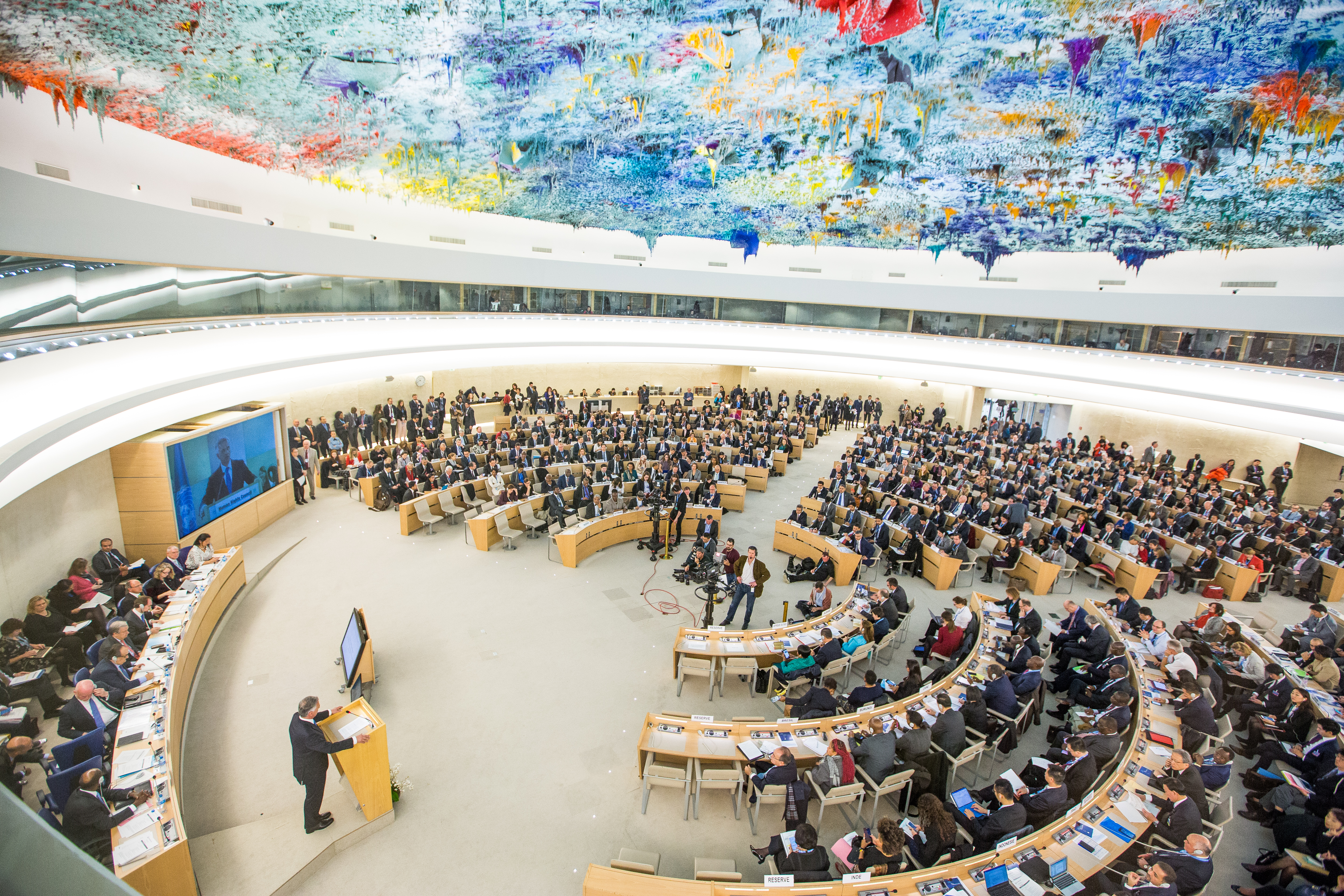
by Claire Doole | Feb 27, 2017 | Blog, Speechwriting
Photo caption: H.E. Mr. Didier Burkhalter, Federal Councilor and Head of the Federal Department of Foreign Affairs of Switzerland, United Nations High Commissioner for Human Rights, speaks during the High-Level-Segment of the 34th Session of the Human Rights Council. UN Photo / Elma Okic
I am watching closely as the 34th session of the UN Human Rights Council starts in Geneva. I am hoping that some of the diplomats I trained recently in public speaking for the UN Institute for Training and Research (http://unitar.org) are going to read their statements with impact.
As a former BBC Geneva correspondent I used to cover the Council and despair of finding a clip that I could use of a diplomat who was sounding natural and looking confident. Most of them would read their statements looking down at their text and in a monotonous tone.
I accept that sometimes diplomats don’t want to draw attention to their statements or at least not find themselves on the BBC news. However, often, on an issue as important as human rights, they do want to stand out and make their voices heard.
So, what are the techniques for making sure that when you read a prepared text such as a speech or a statement, people sit up and listen? By the way, these tips apply whether you are a diplomat or not!
One of the best ways to project confidence when speaking in public is to follow a technique mastered by some of the great public speakers – Ronald Reagan, Franklin Roosevelt, Winston Churchill.
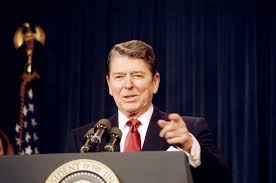
They all managed to read a speech, sounding conversational and unscripted, using a technique known as “See-Stop-Say“.
First of all print your text in large font with double spacing. Make sure that the sentences are short – ideally not more than 10 words so that your eye can absorb them easily. You may want to put key words in bold, as this will help you with emphasis and rhythm.
Practice speaking in the following way:
- See – see each phrase and “record” a picture of it with your eyes. Instead of reading the whole section, let your eye “record” only the phrase or part of the phrase that you can commit to memory.
- Stop – look up from the page and pause.
- Say – say the phrase out loud from visual memory. Pause again before looking down to memorise the next phrase.
Pausing is the key to this skill. Pauses
- Help you remember the phrase
- Allow the audience time to digest your ideas
- Punctuate your sentences
- Build anticipation.
The great American jazz musician, Miles Davis, once said, “in music, silence is more important than sound”.
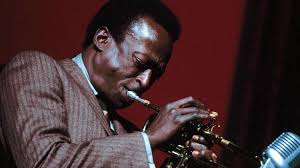
This applies to public speaking too. Pausing is your best way of sounding authoritative. It automatically gives you “gravitas”. And, if you have a key phrase or message, pause before and after it for increased impact.
Rehearse, Rehearse, Rehearse
When I am preparing managers, executives, and CEOs to deliver keynote speeches, they are always amazed when I tell them that professional speakers, journalists, and moderators, always practice their first 20 seconds. It is the moment when you are most nervous so it calms the nerves if you know what you are going to say.
If you watch TV journalists before they go live, you will see that they are walking to and fro (movement aids recall) preparing their first answer.
It is always important to practice reading out loud your statement or speech so you become familiar with it. If you can remember the first 20 seconds that will also help as you can keep eye contact with the audience before you follow the “see-stop-say” model.
If you are delivering your remarks on stage, choose five spots in the room, which form the shape of a W – practice making your points to each spot. This will ensure that you include everyone in the room – even those on the sides who are easily ignored.
If you are reading your statement seated, like the diplomatic delegations at the UN, then you need to look up and straight ahead. The UNTV cameras will focus on you and the journalists, who receive the video footage, will be delighted as they will have a wealth of clips to choose from as you deliver your statement with impact.
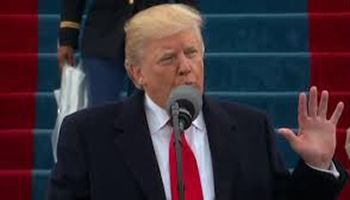
by Claire Doole | Jan 20, 2017 | Blog
The Greeks got it right 2500 years ago. If you want to influence or persuade people you have to show ethos (character), pathos (emotions of the audience) and logos (the logic of the argument).
This principle – known as Aristotle’s Golden Triangle – is the cornerstone of powerful oratory – used by politicians, leaders and laymen when speaking in public.
So on the day we bid farewell to President Obama and usher in four years of Donald Trump as US Commander in Chief, I thought it would be interesting to briefly assess his inaugural address and see how he applied the golden triangle.
Aristotle argued that ethos, pathos and logos were not only equally important but also mutually supportive. For instance, a speaker would be more likely to sweep his audience along with his emotional appeal, if he had previously established his credibility and constructed a robust argument.
But does this hold true with Donald Trump, known for his pathos but not necessarily for his ethos and logos?
To date, Trump has made very few scripted speeches. At many of his rallies he spoke off the cuff, playing to his unstructured conversational style.
Would he have less pathos when constrained by a speech and a teleprompter but more ethos and logos?
Trump’s inaugural speech
This was a speech that set the tone for Trump’s presidency: populist and nationalist. It embodied his ethos as the man who is a disrupter, who is anti establishment and does things his own way.
He appealed to the emotions of the audience (pathos) using simple and direct language:
“We will get our people off welfare and back to work. We will follow two simple rules, buy American and hire American.”
Unlike previous inaugural speeches, President Trump kept the rhetorical flourishes to a minimum.
“A new national pride will lift our sights and heal our divisions. It’s time to remember that old wisdom our soldiers will never forget. That whether we are black or brown or white we all bleed the same red blood of patriots.”
But it was hard to find the logos (rational argument). If an inaugural address is about uniting the country and Trump has previously said that he wants to bind the wounds of division then this speech for many commentators failed.
They remarked that the tone barely differed from that of his campaign speeches. Perhaps, they surmised, this was a speech for the party faithful.
“This is your day, this is your celebration, and this, the United States of America, is your country.
“The forgotten men and woman of our country will be forgotten no longer. Everyone is listening to you now.
“What truly matters is not which party controls our government. But whether our country is controlled by the people.”
The target audience of an inaugural speech is always the entire nation – the President striving to bring unity to a country following divisive elections.
The question is did this address after one of the most divisive elections in history sufficiently reach out to all Americans?
Did it persuade you? I would be really interested to hear your thoughts and comments.
And for those who are wondering how Aristotle’s golden triangle can help your public speaking, here are his big three with two of my own thrown in.
5 Takeaways for your public speaking
1. Ethos (character) is important in speeches. In the words of Aristotle “we believe good men more fully and more readily than others.”
2. Emotion (pathos) trumps logic. The brain’s limbic system, which governs our emotions, is five times more powerful than the neo-cortex that controls our logical minds.
3. Logos is often an optional extra. Speeches move too fast for audiences to follow the rational argument.
4. Less is more. Give audiences time to think and make their own associations. Don’t cram in too much information.
5. The audience is more important than the speaker. It is not what you say but what people hear. You can have the best message in the world but the receiver will always understand it through the prism of his own emotions, preconceptions, prejudices and pre-existing beliefs.
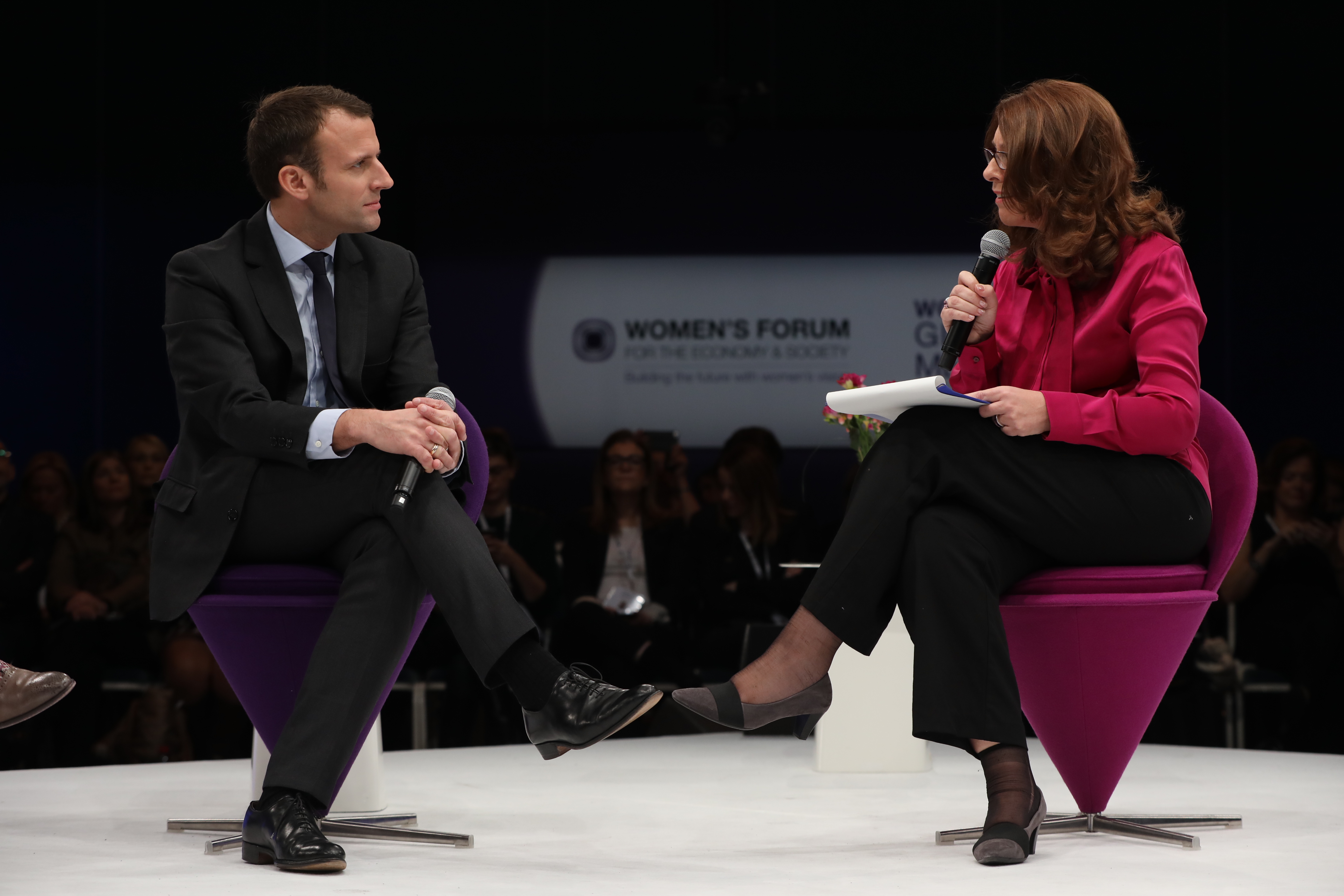
by Claire Doole | Dec 23, 2016 | Blog, Moderating
Emmanuel Macron, the French presidential hopeful, was getting ready to take the stage, and all I knew as panel moderator was that he was meant to sit in the chair second to the left.
He and I were taking part in the Women’s Forum for Economy and Society in Deauville. I had no idea what he would say on our panel discussion about the economic advancement of women. His PR team were nowhere to be found.
So when the makeup artist whispered to her colleague that she was about to go upstairs to do his make-up, I followed her into the inner sanctum.
I needed to know if he was willing to speak in English – a red line for some French politicians – or whether he would be speaking through an interpreter. I wanted to briefly introduce myself and the first topic for discussion – the gender pay gap between men and women. From experience, I know it is important to build rapport with high-level panelists, and to sense if they get my British humour.
He did – peering over my clipboard and asking what questions I would be posing – in perfect English.

Patty Hajdu, Canada’s Minister for Women, Emmanuel Macron, French Presidential Candidate, Claire Doole, Moderator.
He was a master communicator. He understood the audience and did not dominate. He accepted graciously the business card I gave him from the founder of a feminist group I had met the previous night. She had calculated that at the current rate of progress women in France would be paid the same as men in 2186!
He even understood my humour as I asked him if he was or had ever been a feminist.
It was a sound bite that worked for him too as it went viral on Twitter.
All of this with no preparation from his PR team. The communications teams for the other panelists – Patty Hajdu, Canada’s Minister for the Status of Women, and Arancha Gonzalez, Executive Director of the International Trade Centre – had been very helpful with background information.
If you are going to successfully moderate high level panels, you do need to prepare. You have to do your homework as an advanced briefing from PR teams does not always happen. However, if you do meet with panelists’ PR teams be wary, they might try to stifle debate! The day before meeting Macron, I moderated a panel with the CEO of Coca Cola, Muhtar Kent, on why he was a feminist.
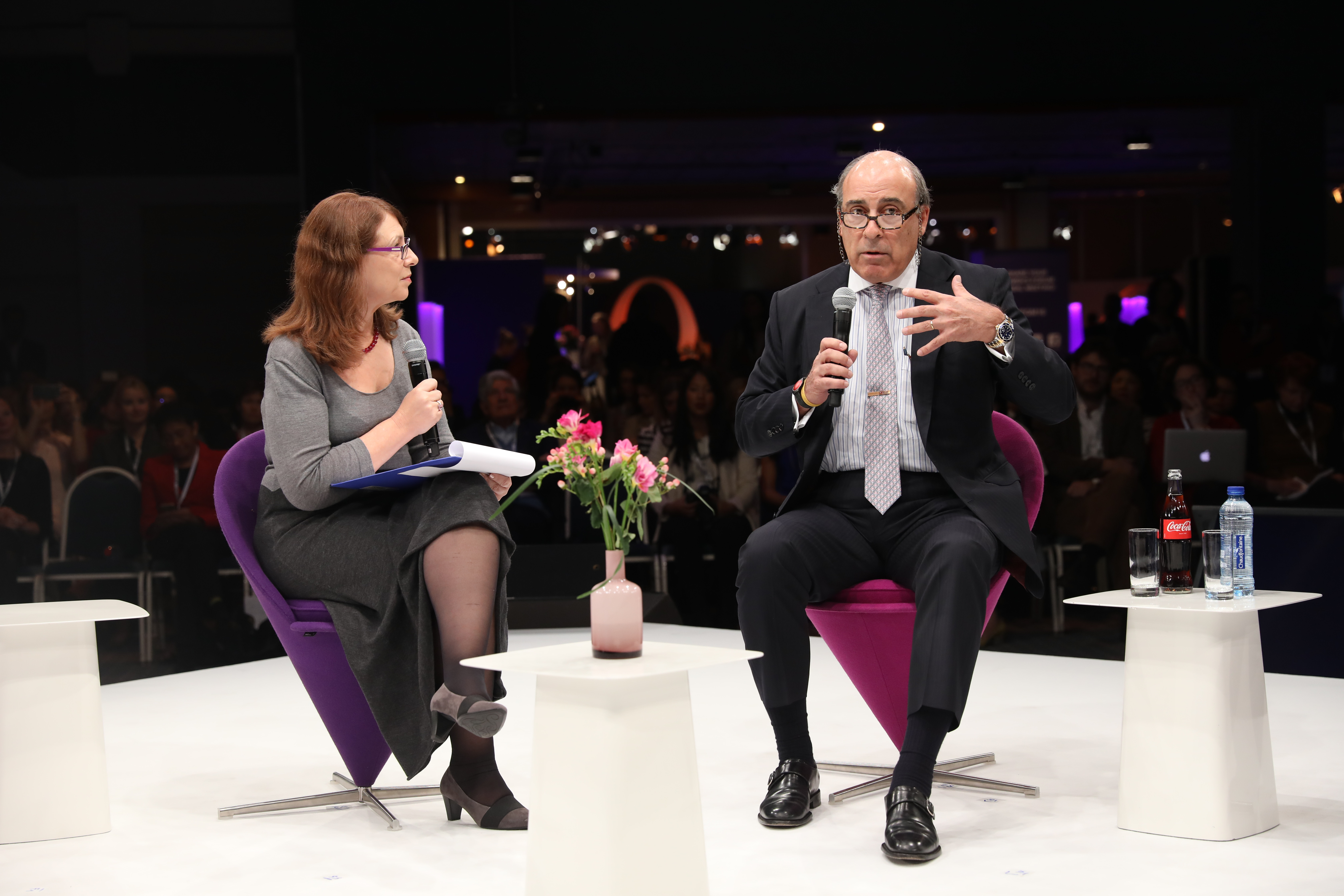
Interviewing the CEO Coca Cola Muhtar Kent about why he says he is a feminist.
Mr Kent’s PR team were much more controlling – keen to know my questions and those of the other two women who were on the panel. I gave them broad areas.
With hindsight, I can understand why they asked. He resigned as CEO 7 days later after what the Wall Street Journal called “a rocky eight-year run at the top”.
During that time, he had doubled the number of women on the Board of Directors from two to four, but parried my question on when there would be gender parity on the 14-member board with the word – “soon”.
He saw the event as a win-win to explain how Coca-Cola was empowering women in the countries where it operates. He even managed some product placement much to my chagrin, a photo reproduced in Forbes and Grazia magazines.
Hot on the heels of these panels in Deauville, I was asked, at one of the moderating workshops I run, for my 5 top tips on handling high -level panels.
Here they are:
• Be prepared, but ready to go with the flow
• Build rapport even if you only have a couple of minutes beforehand
• Listen intently and ask follow-up questions
• Ask the questions the audience wants asked
• Don’t be swayed by the PR team!
Interested in watching the whole debate? Here is the panel with Emmanuel Macron, Patty Hajdu and Arancha Gonzalez on the economic advancement of women.
And if you would like to find out why the CEO of Coca-Cola, Muhtar Kent says he is a feminist, click on this link.

by Claire Doole | Oct 31, 2016 | Blog
Many of the people I coach in the art of powerful presenting are highly intelligent and articulate. They are medical doctors, academics, bankers and lawyers.
But they are not journalists, like myself. They often don’t have an innate sense of storytelling or they know too much and struggle with getting the level of detail right.
This is where structuring your thoughts for maximum impact comes into play. I recommend two ways to structure your thoughts that will guarantee the audience is focused on the key messages, and not on trying to decipher meaning in a disorganized presentation.
IMPACT
All trainers love mnemonics – memory devices. Here is one to help you structure a presentation.
Introduction – get the audience’s attention with a bang and make sure the benefits are clear.
Main messages – outline your purpose and your key messages – what do you want the audience to take home so that you achieve your purpose? Do you want to inspire, sell, persuade or inform?
Points – what are your main points? How are you going to structure them? Chronologically, most important to least important, geographically or thematically? Remember to support your points with facts, data and stories.
Associate – make sure your supporting examples are relevant to your audience.
Conclude and recap – summarize and repeat your key messages.
Take-away – finish with a bang. This can be a call to action – what do you want your audience to do, feel or say as a result of your presentation?
It follows the old adage – tell them what you are going to tell them, tell them, and then tell them what you have just said. Believe me repetition in spoken communication helps make your messages stick.
MINTO PYRAMID
All communication involves an element of persuasion. Barbara Minto developed the pyramid principle in the 1960’s. It is effective if you want to persuade somebody with an argument. It works well when writing, presenting proposals or recommendations, making an elevator pitch or responding to a busy executive’s question.
You start with an introduction that takes your audience through the following steps:
Situation – describe the situation so it is easy to understand. This can be something that the audience already knows or you know that they will agree with.
Complication – introduce the issue or issues that make the situation problematic.
Question – ask the question that leads to the answer you want to give in your proposal or recommendation. It can also be the answer to the question the executive wants answered such as “what should we do?”
Answer – this resolves the complication you identified.
The body of the presentation deals with the solutions you are proposing. As you know, people rarely remember more than three points so divide your solutions into three, and for each ensure you have supporting information to make your case.
At the end you can recap the solutions, your key messages and either end with a call to action or outline next steps.
As this is not a mnemonic, it will be easier to understand visually.
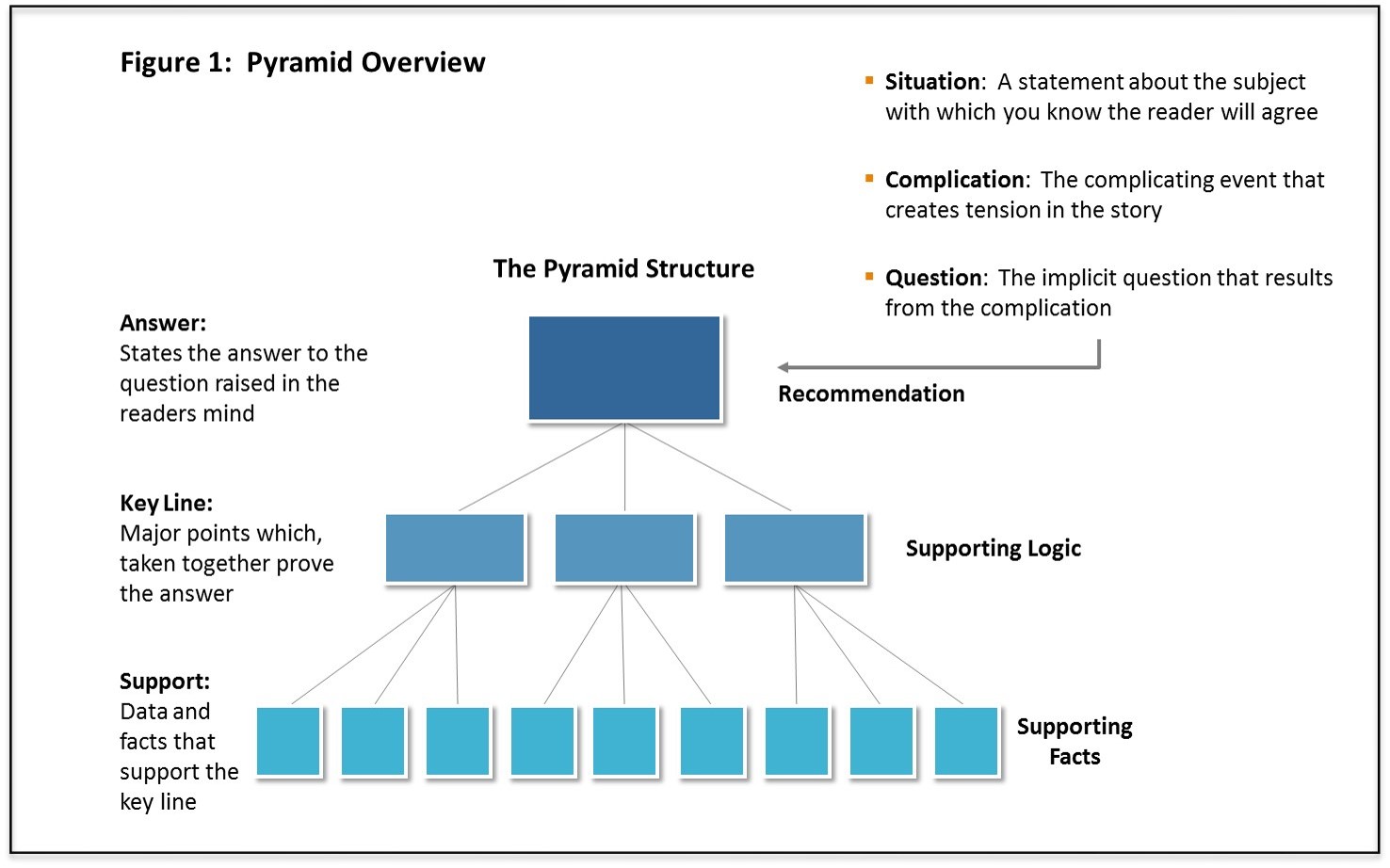
Call to Action
As I said earlier, it is vital that you and your audience know what you want them to do as a result of listening to your presentation.
So, as a coach/trainer, who walks the talk, if you would like to
find out how to structure your thoughts clearly and compellingly, please do get in touch.
In my next monthly blog, I shall be sharing tips on how to use stories to get your message across.
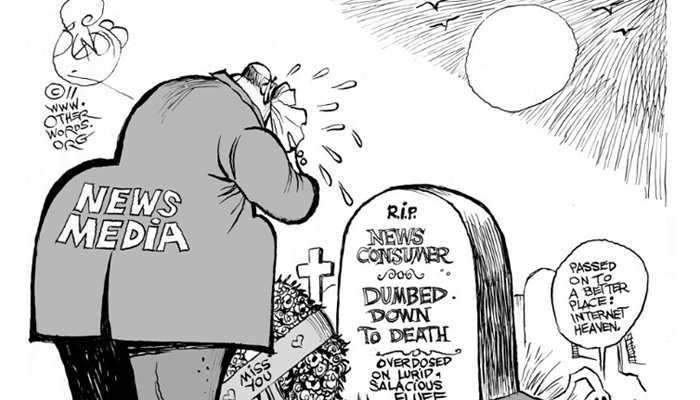
by Claire Doole | Sep 28, 2016 | Blog
 The media, particularly but not exclusively in western countries, is in crisis. Ever since I left the BBC, the corporation affectionately known as “auntie” has been laying off thousands of its nephews and nieces!
The media, particularly but not exclusively in western countries, is in crisis. Ever since I left the BBC, the corporation affectionately known as “auntie” has been laying off thousands of its nephews and nieces!
Newspaper conglomerations are firing journalists in droves in the UK, US, Brazil and even in Switzerland, where I am based.
The “fortunate” journalists who are left behind have to do more with less.
And in this digital world they have to work on all fronts.
For more bittersweet insights into the depressing state of journalism see last month’s episode of “Last Week Tonight” with John Oliver.
What does this mean for you?
The traditional print and broadcast may not have the time or resources to write your story, attend your press conference or go on your press trip, but many are more open to accepting your written or visual content.
The BBC used to be reluctant to take video footage, known as B-roll or vides news releases, from organisations. But today the BBC and other major broadcasters such as Al Jazeera, Euronews, CCTV, Russia Today regularly download broadcast quality content from the ICRC video newsroom.
Unable for financial, logistical or political reasons to send their reporters to conflict zones, they build their stories using this free content. Some though like the BBC baulk at using the interviews of the agency spokespeople or representatives.
If you have newsworthy content, you can even decide which media to offer it to. The ICRC recently found itself in the enviable position where The Sunday Times and the BBC were interested in publishing the account of the siege war and suffering in Madaya by the head of the ICRC delegation in Syria. The article was published on the BBC website, where it was one of the most read that week.
When journalists become PR people
If you can’t rely on that resource in-house, you can follow the example of the UN refugee agency, which has a roster of freelance journalists who report on asylum and refugee issues.
Do you remember the story of this girl?

Yusra Mardini is the Syrian girl who swam at the Olympics in Rio as part of the refugee team. Well, a journalist in Berlin contracted by the UN refugee agency first broke this story, which was picked up by the world’s media.
I personally wonder if a journalist paid to write an article by an organisation can objectively report on that organisation when it is in the news.
But I am told this is an issue for the media outlet and or journalist and not the organisation. It would seem though important that it is made clear that the journalist can report on the organisation’s issues and that they should not feel obliged to self censor for fear of offending their PR client!
It is a model that is gaining traction. I know of a number of print and broadcast journalists in Geneva who write or produce video for international humanitarian organisations. Unable to make a living from pure journalism, they welcome the extra income.
Keeping the editorial line
There are still some die-hard publications, which you will find it difficult to convince to take your copy, even if it is extremely well written. The New York Times recently turned down a powerful story about healthcare workers in South Sudan written by a former journalist now working as a public relations officer at the ICRC.
But the New York Times seems more open to taking text if it comes with photos, especially if they are “laundered” through the photographic agency you are working with. Recently the newspaper accepted this story commissioned by UNICEF on Syrian refugees coming into Europe
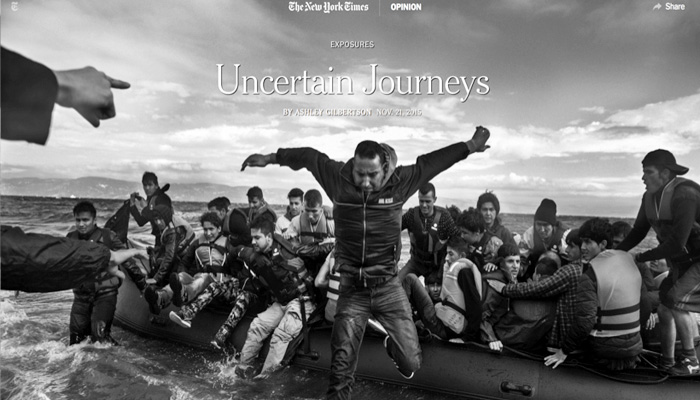
It was, however, placed in the opinion section. The first time the New York Times had a visual editorial.
The boundaries between journalism and public relations are moving. The two professions have always had a symbiotic relationship but with the media in crisis, for the moment, it would seem that more journalists are moving into PR full-time or on a freelance basis.
If you have a budget to employ or to contract them, you can be certain that it will be easier to get the story of your organisations issues or activities covered in the way you want it to be told.
Images by
other words.org,
abc.net.au,
NYTimes


